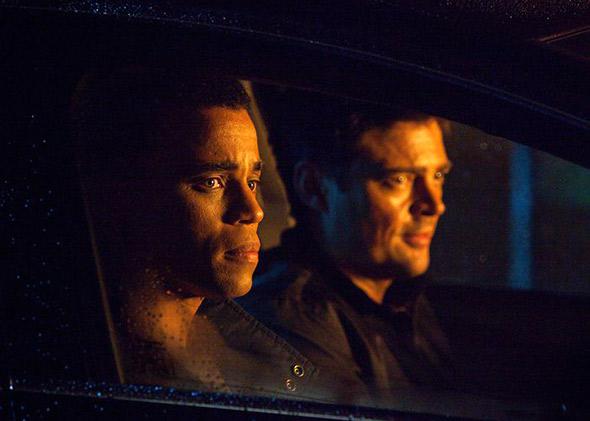Almost Human’s first season ended March 3, but a decision on whether the show (a buddy-cop procedural set 34 years in the future) will be renewed is still forthcoming. The reason it deserves a second season? It’s got some of the best futuristic tech on television today. Here are 10 thought-provoking technological advances from 2048.
1) Sexbots. These non-human robots are used exclusively for sex. Intimate Robot Companions (or, ugh, “bangbots”) are an ingenious—if slightly icky—potential solution to sexual violence.
2) Omnipresent bitcoin. Apparently it’s common currency in the future, so invest now. (This plotline may have been developed before the Mt. Gox meltdown.)
3) 3-D printers in everyday use. For instance, in the “Straw Man” episode, “bio printers” are used for both making cupcakes and printing humans—a nice spin on the idea of cloning. No need to grow a new human being, just print off a copy! (Also clever: chemical printers that spit out drugs.)
4) Prosthetic organs and limbs. The “bio-mech” hearts implanted in humans on the show have been rejiggered for extortion purposes, but a fully functioning fake heart? Yes, please. Detective Kennex’s prosthetic leg also outperforms ordinary human legs. This is more sci than fi: The Johns Hopkins Modular Prosthetic Limb is brain-controlled.
5) Robots to do our bidding. Dorian (played by Michael Ealy) is an empathetic “DRN model” with a “synthetic soul.” He can interpret languages, access databases, do chemical analysis, and drive a car with his mind, all while making the occasional tasteless joke at his human partner’s expense. The less lifelike MX robots are also partnered with human cops in order to save human lives, but perform their jobs with less personality. Either way, they’re indescribably useful. Related to this …
6) Drones to do the dirty work. The drone expert who goes by @drunkenpredator told me in an email that the morality of using drones to kill targets from afar raises a host of ethical issues. But, he adds, “the show does an incredibly realistic job of showcasing their law-enforcement use. Much like the U.S. law enforcement plans for them, they aren’t armed, and they take the place of most police helicopters. They don’t do creepy, wide-area surveillance, but instead are used to chase bad guys in hot pursuit or deliver stuff in high-risk environments. In short, the ‘dull, dirty and dangerous’ jobs that robotics are great for.” Smart bullets, too, are not that far from reality: TrackingPoint has built a computer-guided rifle scope. Taking humans out of the equation when it comes to law enforcement is potentially horrifying or hugely desirable, depending on your perspective.
7) Pills to supply all the nutrients your body is missing. These “personalized meal supplements” analyze what each individual needs and provides it in pill form. Like today’s vitamins, but presumably with science to support their use.
8) Cremation machines that vaporize corpses. An elegant and efficient solution to dead body disposal.
9) Electronic Post-Its. File this one under “don’t need but really, really want.” Scribble your note-to-self on a digital pad, then fling the note across the room, where it attaches itself to a surface.
10) Pills that help people remember things they’ve forgotten. Diarrhea is a side effect, but it’s worth it.
